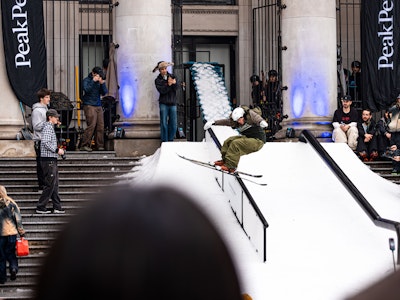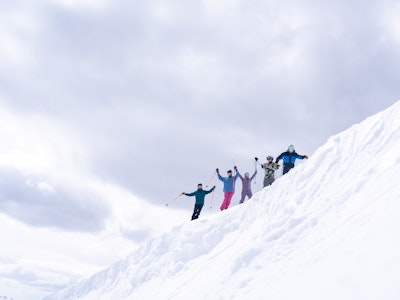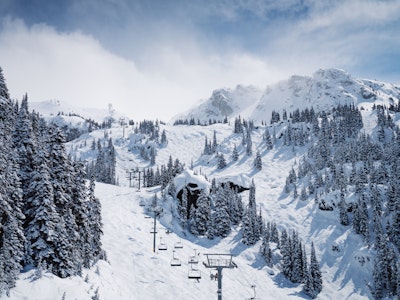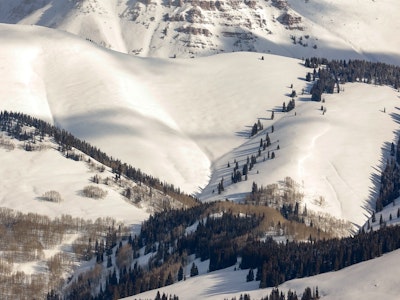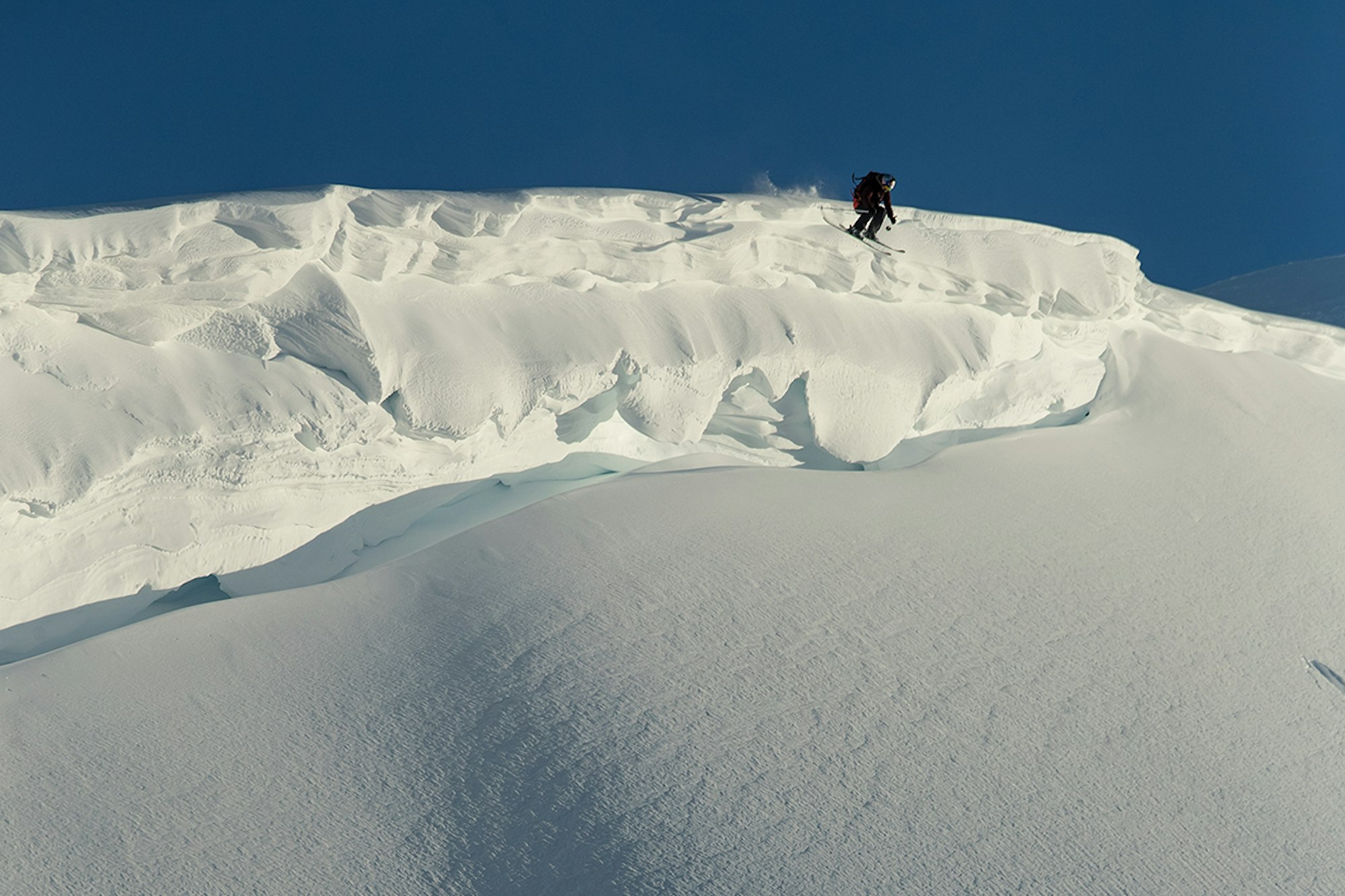



WORDS • TESS STROKES | PHOTOS • JEFF CRICCO *unless otherwise noted
Click here to download All In from MSP.
All In is Matchstick Productions’ 27th annual ski movie, and it happens to be the company’s first flick to star an equal number of women and men. However, while the film features four women—Angel Collinson, Tatum Monod, Michelle Parker and Elyse Saugstad—and showcases four men—Mark Abma, Wiley Miller, John Collinson and Cody Townsend—you’d be mistaken to call it a women’s film.
“I’m not sure why we are calling this an equality movie for any reason other than it’s not a women’s-only film because in the past, those films starred only women,” says MSP Executive Producer Murray Wais. “This film features an even number of women and men, something that, surprisingly, hasn’t been done before. Ski films have usually featured a ton of dudes and one woman or all women and no men, so I do feel like we’re breaking some new ground.”
The idea had been brewing in the brain of Ingrid Backstrom for years but also manifested itself in conversations among some of skiing’s other top female skiers. The proposal: Get a group of skiers together who identify with each other and don’t have regular opportunities to ski and film with one another. Through injury rehab programs, common friendships and mutual admiration, the group of five materialized. Each of those female skiers has earned her place among skiing’s elite, collectively netting every industry accolade available. Both Monod and Collinson have won FREESKIER’s Skier of the Year. Collinson was the first female to earn Powder’s Best Line and first woman to score an opening segment in a major ski film in TGR’s Almost Ablaze.
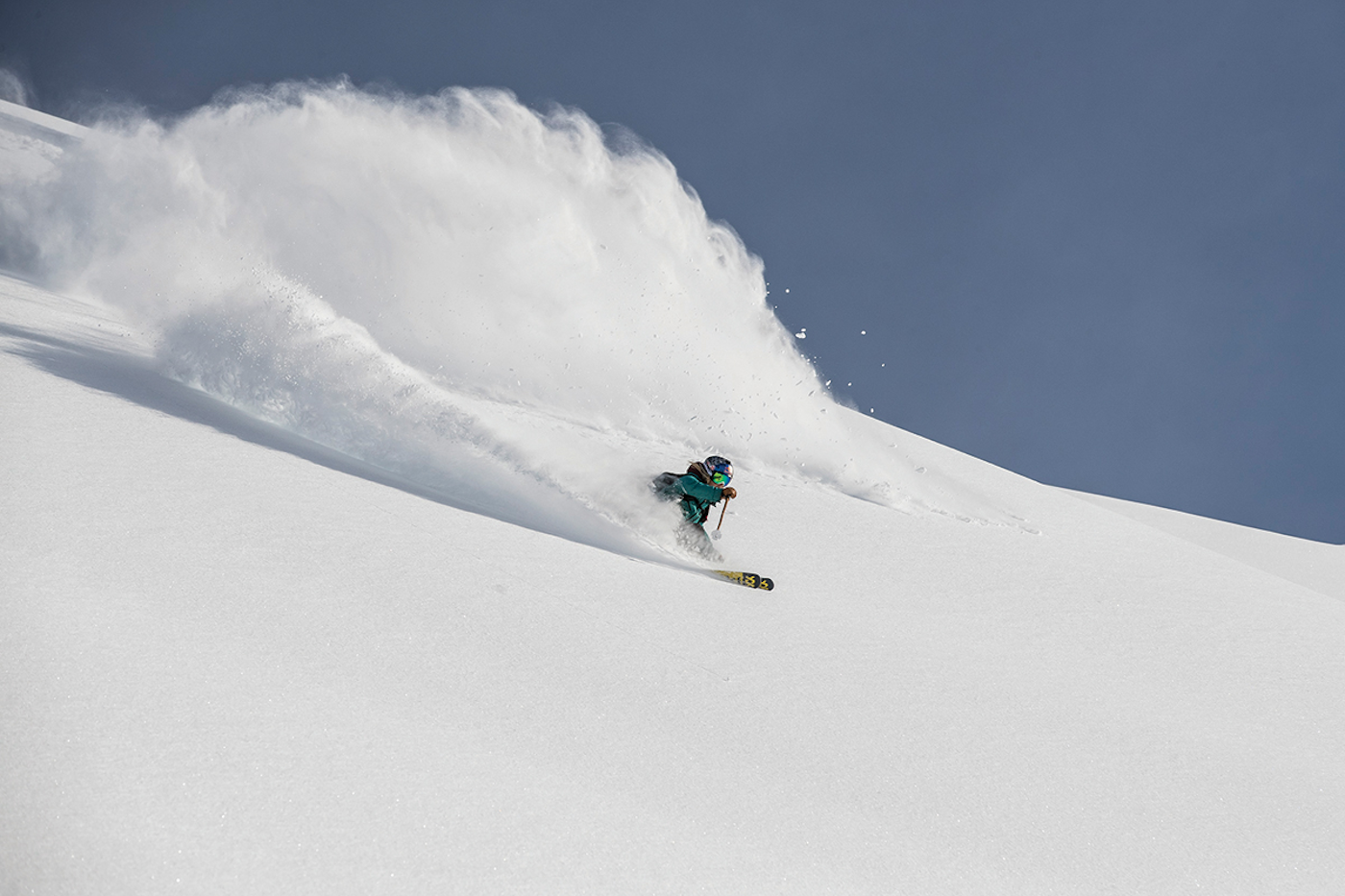
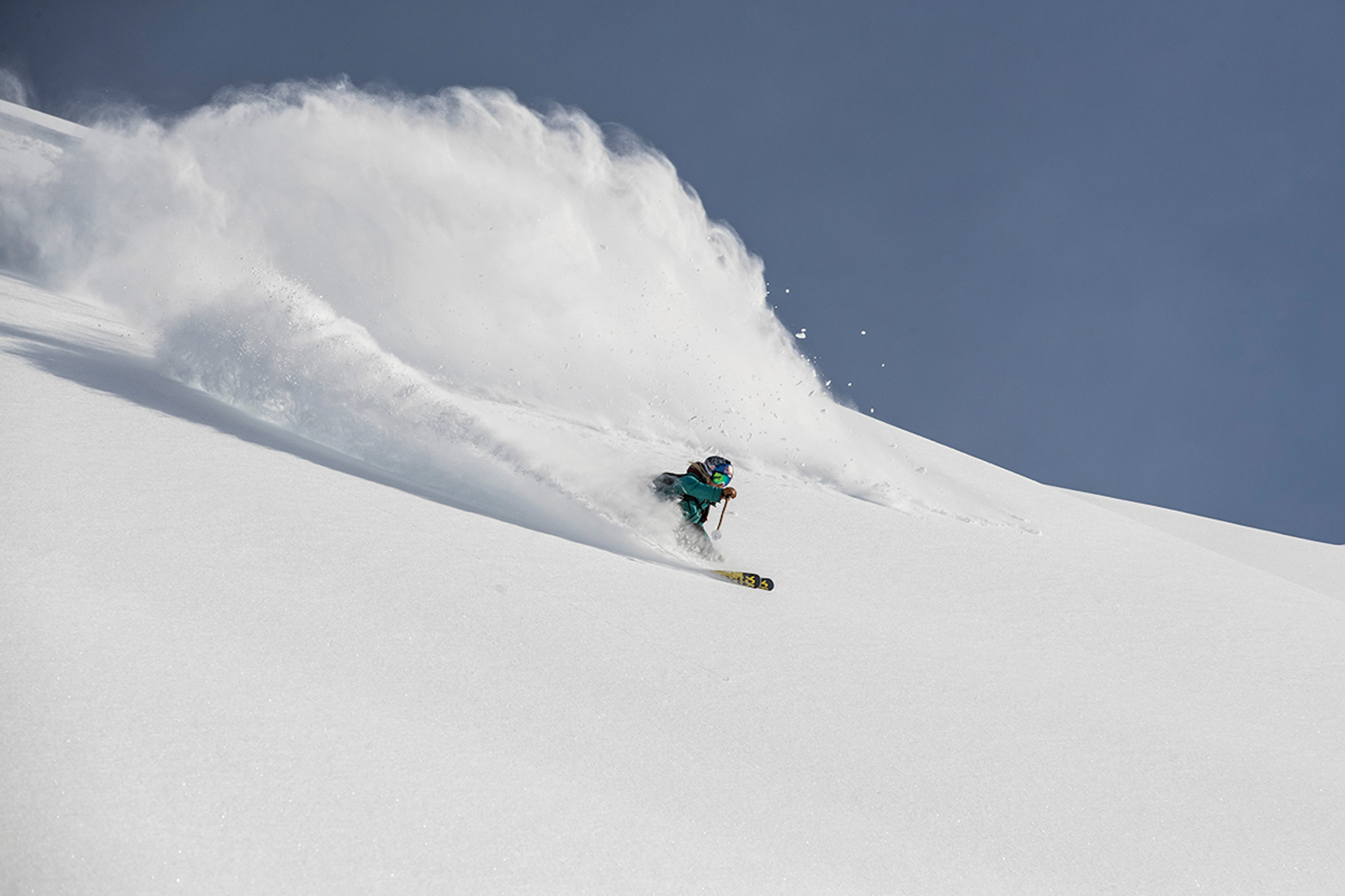
Angel Collinson in Girdwood, Alaska.
Monod was the first female skier to throw a double backflip in the backcountry. Saugstad has won the Freeride World Tour, hosted a TEDx talk and was named one of ESPN’s “Top 50 Women in Action Sports.” Parker has evolved from a competition park skier to an accomplished ski mountaineer, skiing peaks like Denali and some of the steepest couloirs in the Alaska Range, while remaining one of the sport’s most popular skiers. Backstrom, an icon who has skied first descents in Greenland, Baffin Island and China, has starred in more than 20 ski films. And the latter three women helped launch the SAFE AS (Skiers Advocating and Fostering Avalanche and Snow Safety) women’s avalanche clinics.
Backstrom assumed the main production companies were set in their formulas and didn’t have time to make second movies, but when MSP got wind of the idea through Parker, they were the ones asking to make the project. While Backstrom tore her patellar tendon at Stevens Pass on day one of filming for the project, she had already been working to help secure funding through The North Face—fortuitous timing with the company’s 2018 Move Mountains campaign focused on its female athletes. Her injury kept her from appearing in the film, but she helped the movie’s female roster hone in on their collective vision for the project: create a broad-reaching ski flick starring an equal number of men as women.
Backstrom has worked with MSP on nine films since 2004, but she says this was something entirely new for the production house. “There were five really opinionated, interested, involved people throughout the process,” says Backstrom. “We didn’t want to compromise. We wanted to stay true to the original intention of the project.” That meant being more involved in decisions that might have been made in-house in years past.
Saugstad has spent the better part of a decade skiing in front of the camera and is accustomed to being the only female on a film crew. “It’s been just one trip or several days of filming with another female during an entire winter, or none at all,” says Saugstad. This season was unique: every shoot she went on included at least one other woman.
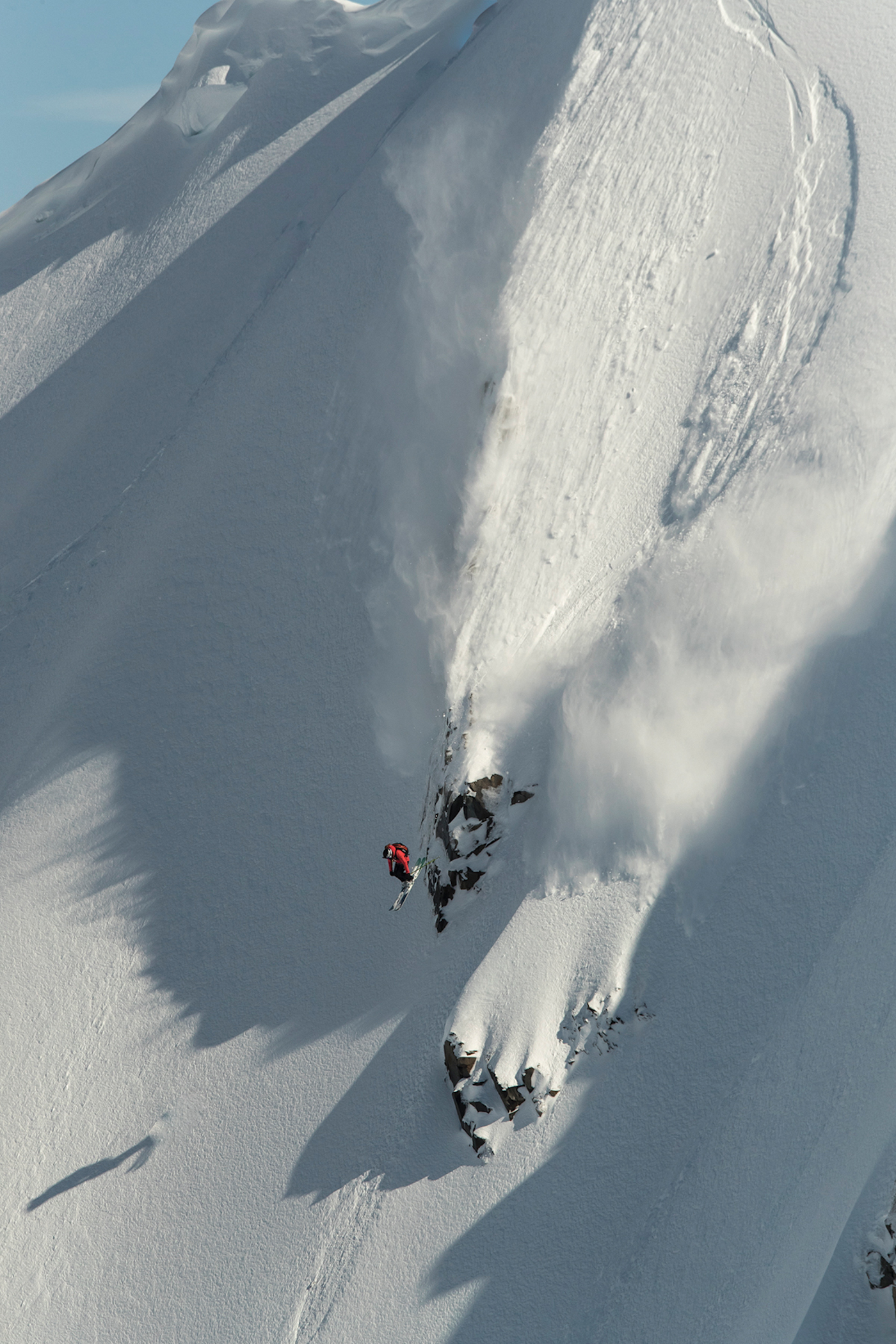
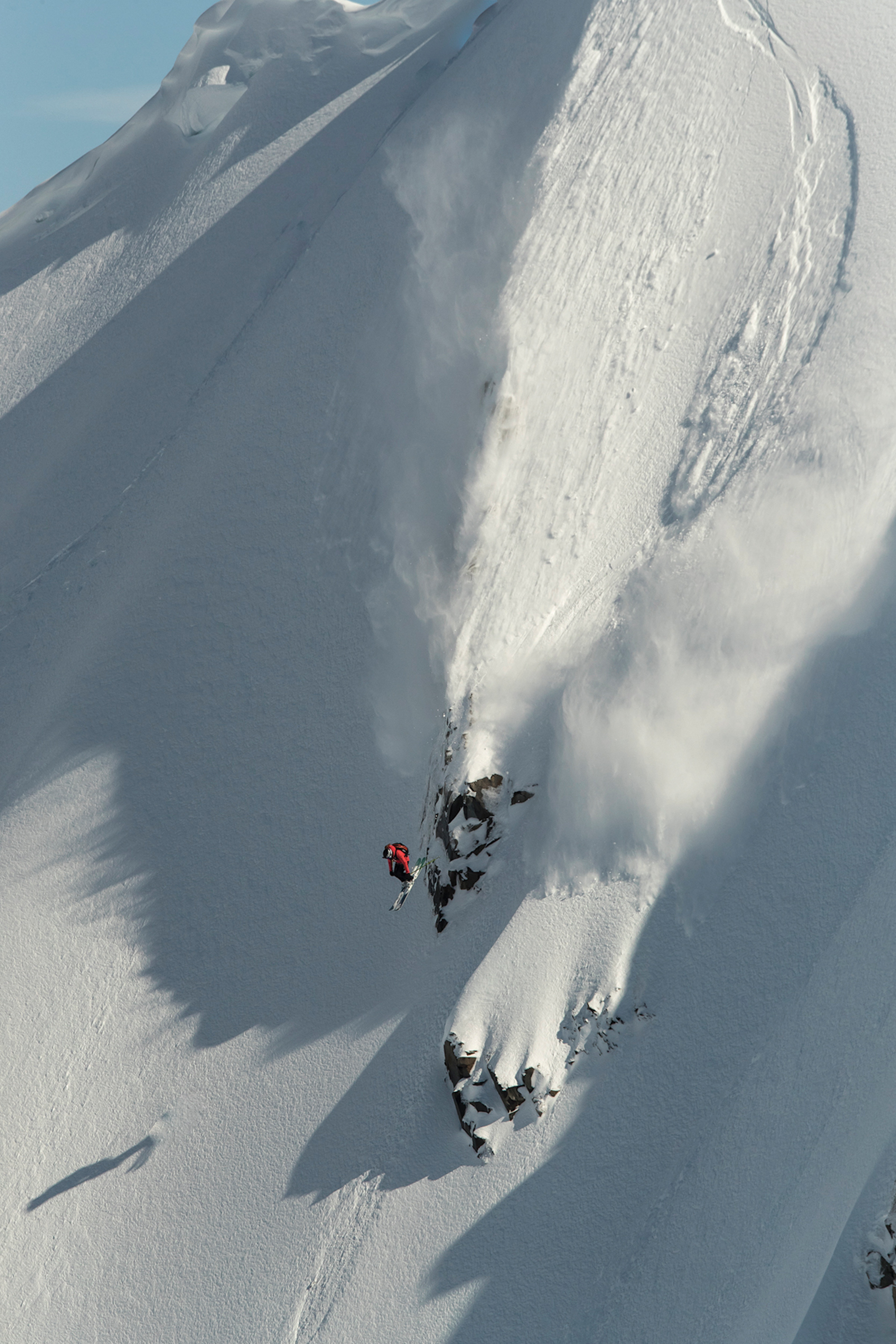
Elyse Saugstad goes airborne in Girdwood, Alaska.
“It really affects everything for the [better],” says Saugstad, who spent two weeks in Pemberton snowmobile skiing with her husband, Cody Townsend, Parker and Mark Abma. “Michelle and I were definitely feeding off each other’s energy and pushing each other. That was the most progressive skiing of my season.”
In addition to Pemberton, Saugstad filmed at Stevens Pass, Monashee Powder Snowcats and Selkirk Tangiers Heli Skiing and also spent two weeks in her hometown of Girdwood, Alaska, with Collinson and Parker. While Alaska’s variable spring snowpack proved challenging for filming, Saugstad says the trio, each of whom are former ski racers who grew up at the base of a major ski resort, stepped it up and still fed off each other—something veteran cinematographer Scott Gaffney saw firsthand.
“All these women have fundamental racing backgrounds, so they were able to just haul ass on firm snow,” he says. Variable conditions demanded near-constant sound decision-making, but the only thing slowing the women down in the field was manners. “They were too polite,” laughs Gaffney. “No one would say, ‘That’s the line I want.’ It was, ‘No, you have it, no, you have it.’”
But, Gaffney says, nothing was dramatically different this winter than any other film season. After all, they weren’t changing the formula, just the ratio. “We weren’t trying to make anything groundbreaking—there’s no social motivation. We work with people who approach us, have vision and insight, and want to get segments done. It’s a male-dominated sport, and that was always the typical ratio. But I do think this will open people’s eyes. I didn’t know what I was missing out on.”
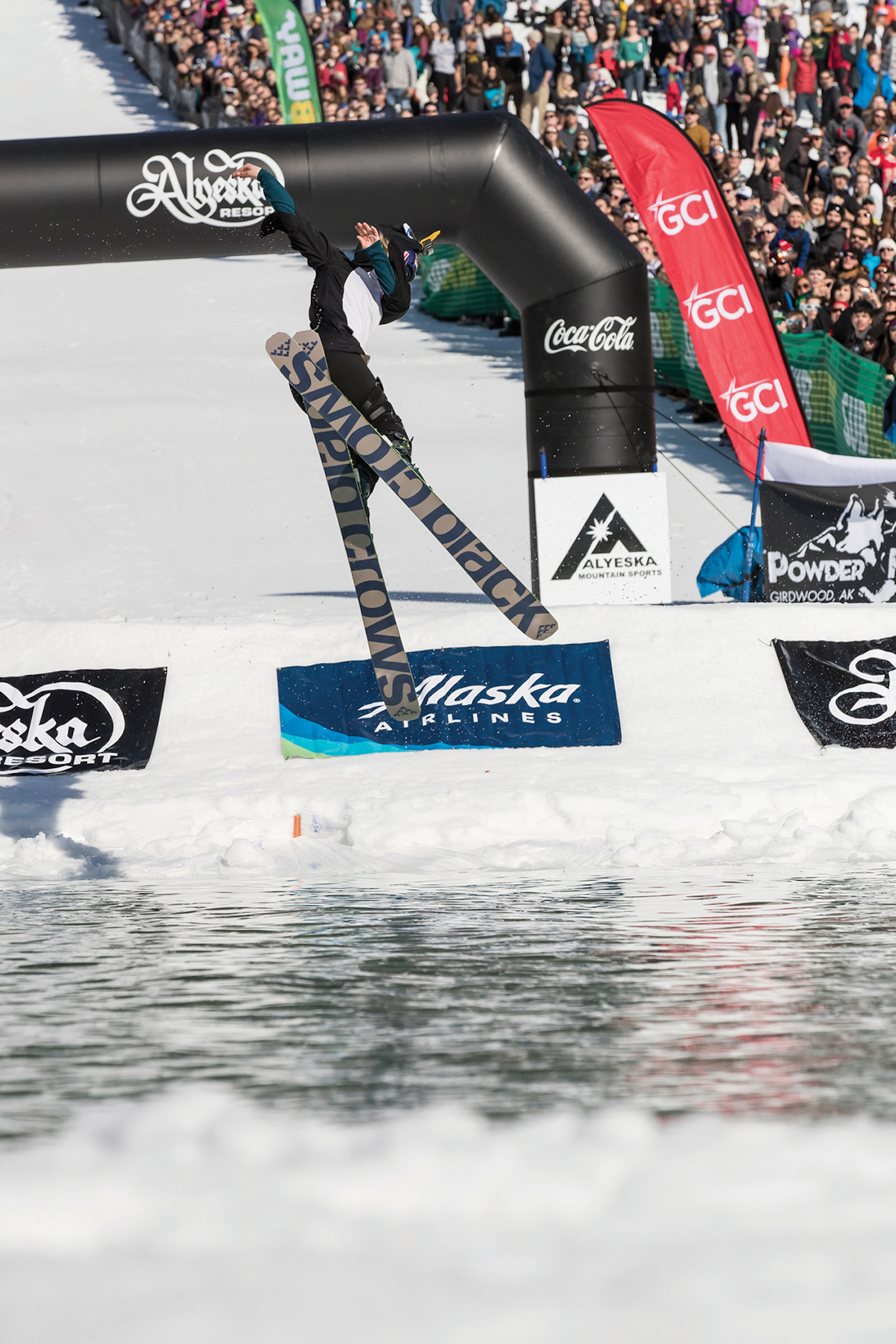
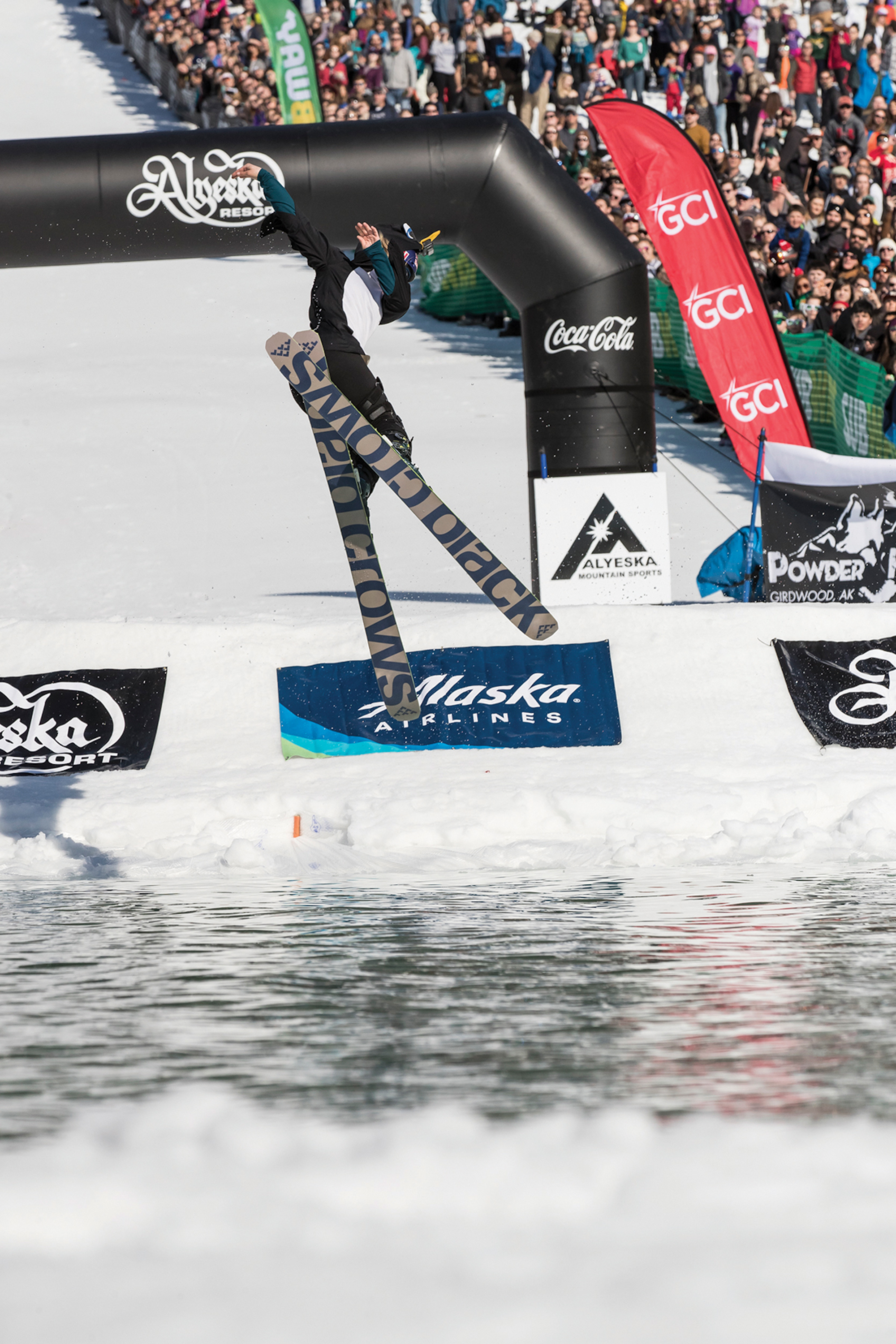
Monod wasn’t able to film action for the project until this past summer in South America due to a knee injury she sustained filming in Alaska with Level 1 in May 2017. But the footage of her intense rehab brings another layer to the film and an authentic look at what goes into skiing at the highest level. Across sports, not just freeskiing, female athletes have a higher incidence of ACL rupture than males, and each of the film’s stars have recovered from major injuries, just one of the many bonds they share.
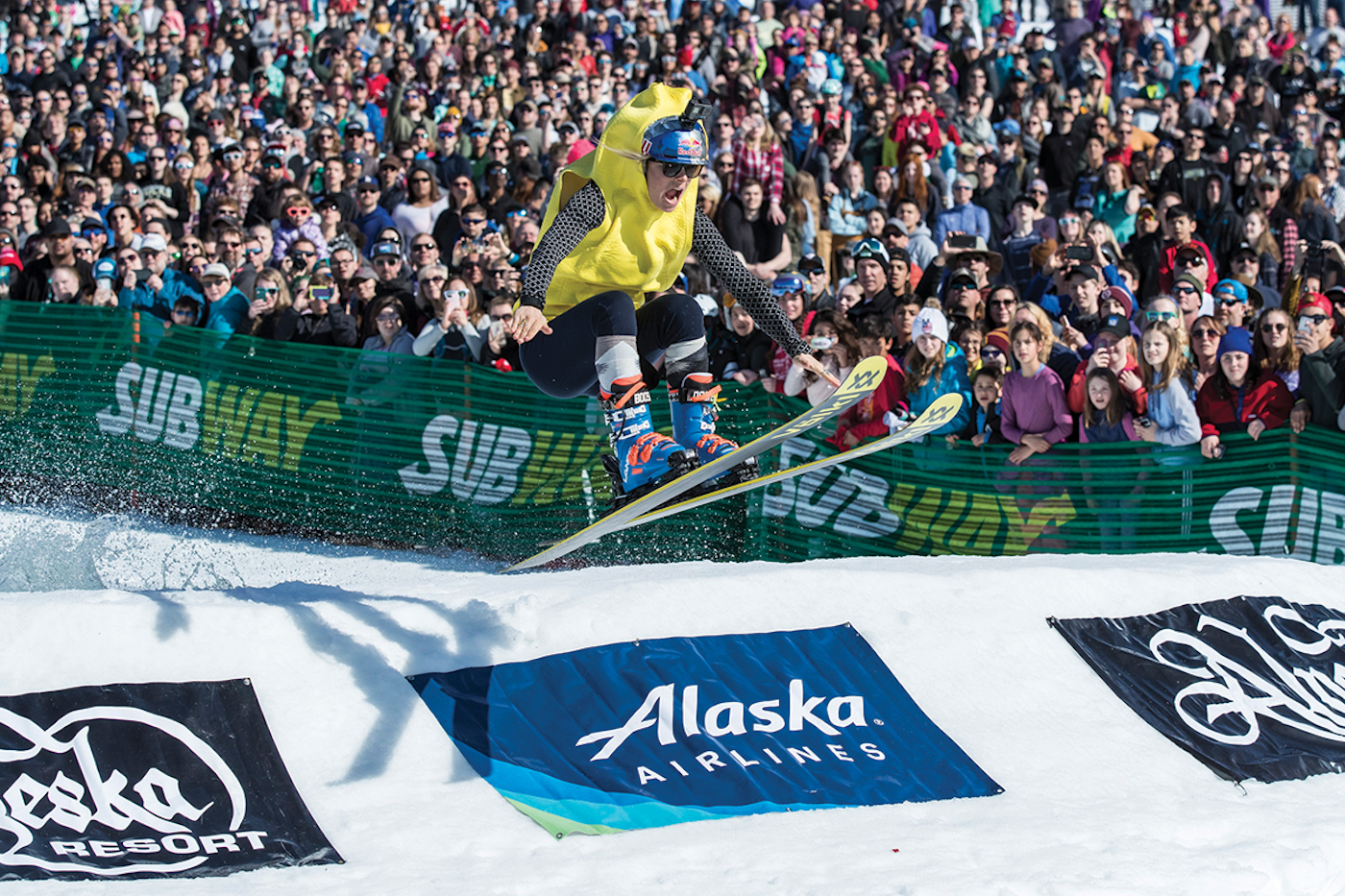
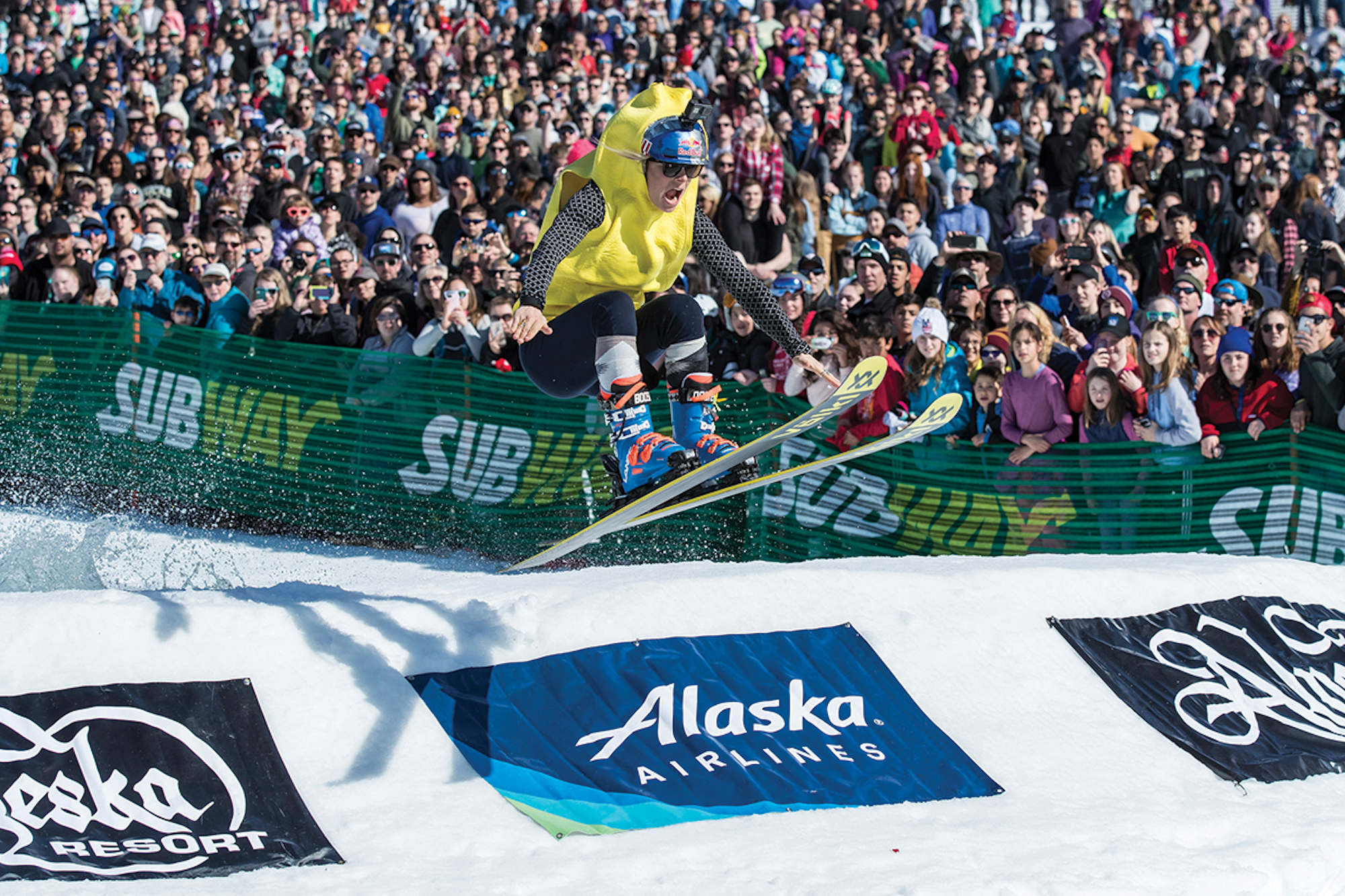
Angel Collinson and Michelle Parker spice up Alyeska Resort’s pond skim.
“For me, it was a no-brainer being a part of a project with the skier I idolized most growing up—Ingrid Backstrom—as well as Michelle, Angel and Elyse, who are at the top of the sport, paving the way for women’s skiing,” says Monod. “Whether you’re male or female, you need to earn your spot in these films. I don’t think production companies should give out segments to women just to be more inclusive. If there’s a female who is on the cusp of breaking through based on her work ethic, skills and talent, then absolutely she deserves to get the camera pointed at her.”
Monod points out that filming in the backcountry requires resources, and those come from sponsorships. “Sponsorships come from standing out as an individual. Filming in the backcountry isn’t like filming in the park. As a backcountry skier, it can be difficult to stand out to sponsors unless you’re winning the Freeride World Tour. Finding a way to individualize yourself as a skier and finding someone to document you who can ski tour or snowmobile efficiently and who has the gear and the knowledge of the backcountry can be tricky. I do hope this film inspires other women to seek out sponsorships and go knocking on film production companies’ doors with talent they can prove is video worthy.”
It’s something even the men in the film have grappled with throughout their careers, before establishing themselves as the high-profile athletes they are today. The dudes weren’t just added as afterthoughts, either. Each represents a meaningful relationship and inspiration: Townsend as husband to Saugstad, Wiley Miller as boyfriend to Monod, Mark Abma as longtime friend and mentor to Parker and John Collinson as sibling to Angel. In all instances, the relationships have developed over many years of mutual respect.
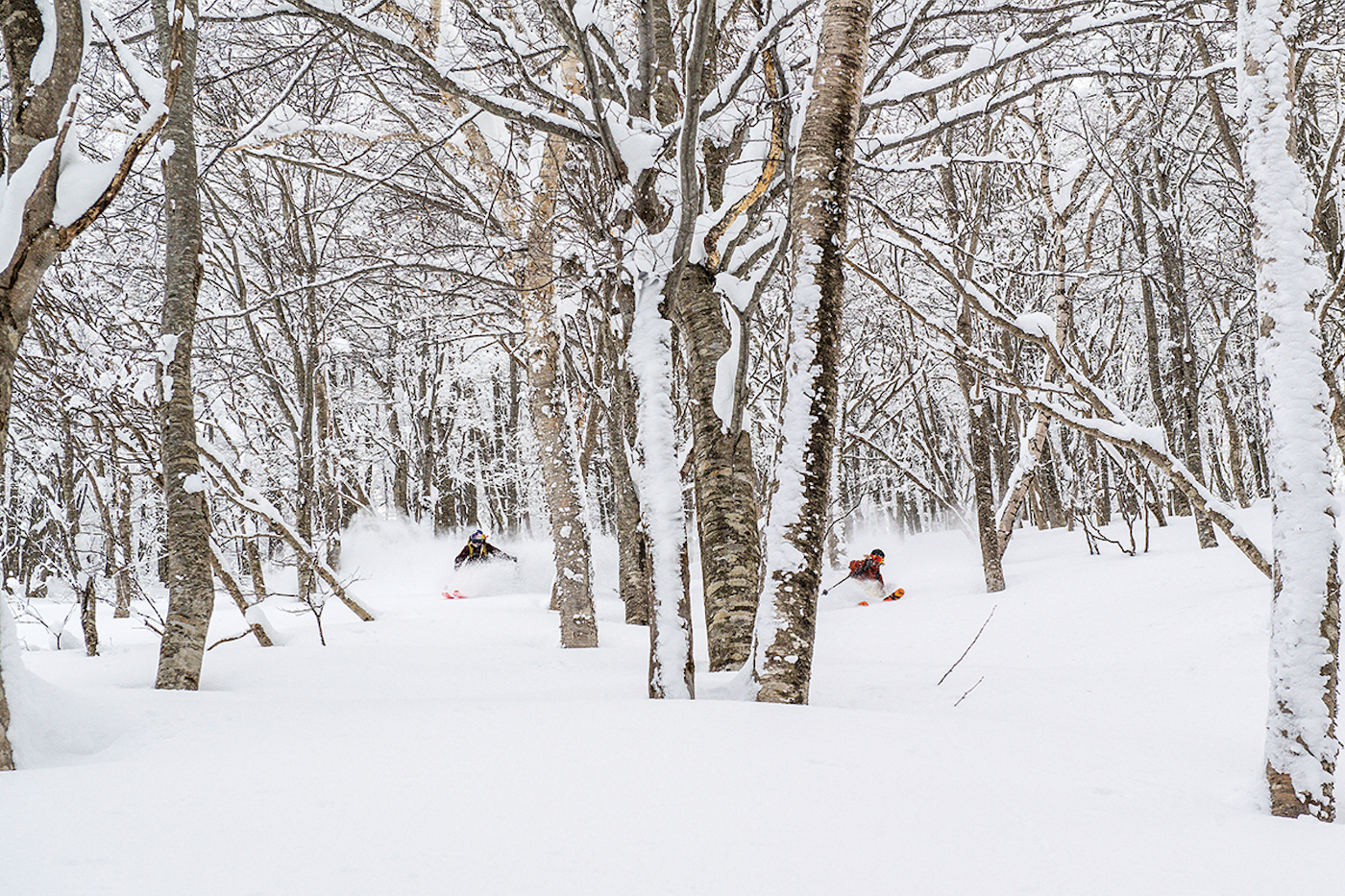
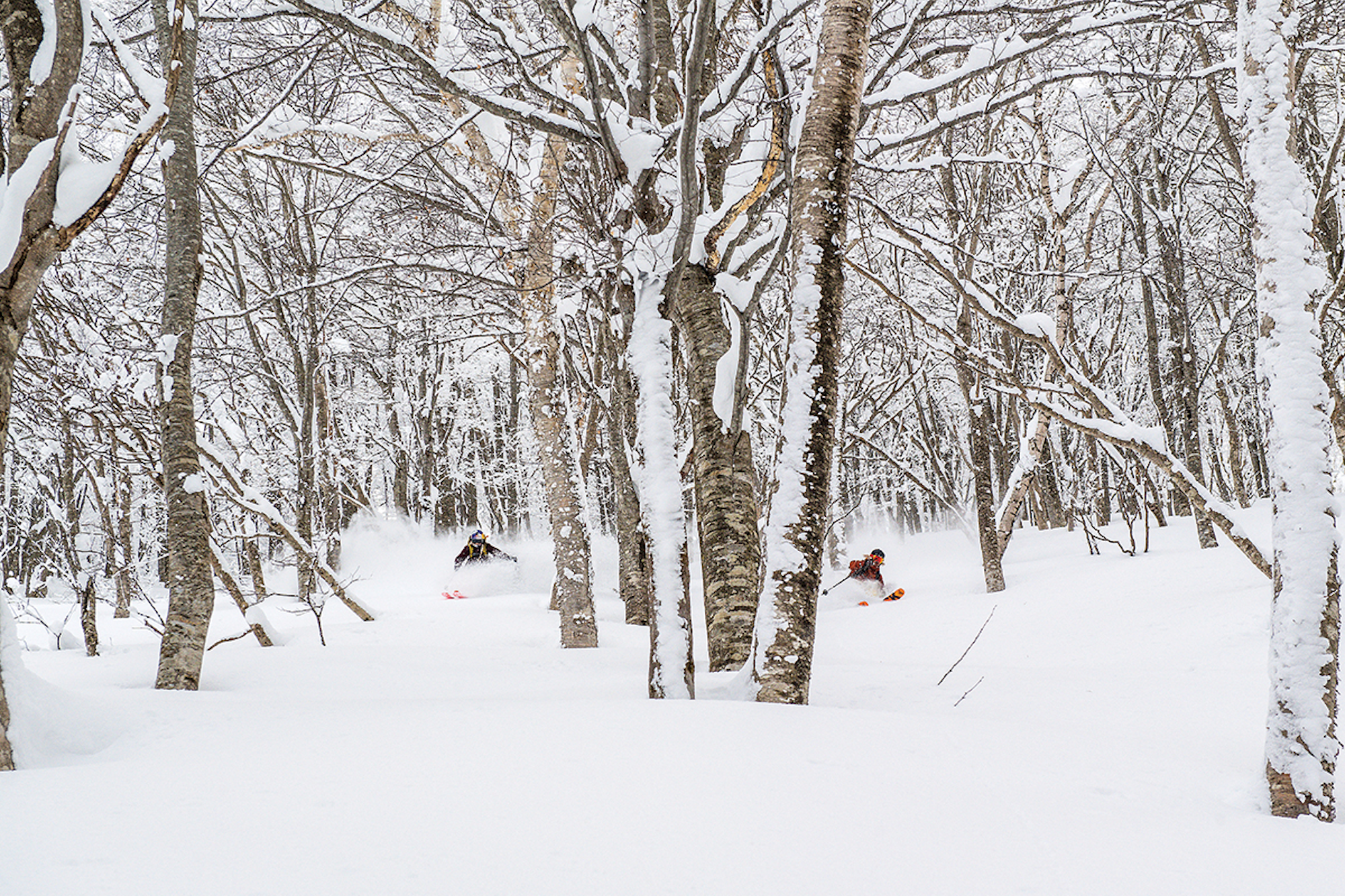
Michelle Parker and Mark Abma at Madarao Resort, Japan. Photo: Eric Berger
“It started when she taught me how to climb out of my crib,” says John. “I always followed her example. I’ve been lucky to watch these women ski in person, and it’s really evident how technically sound they all ski. A lot of guys just look for a cliff and throw a 360, but they look at the mountain a little differently. It’s super inspiring to see a bunch of girls ripping together, positively influencing each other.”
For All In, Abma filmed with MSP’s Guillaume Tessier, the same cinematographer who discovered him in the Whistler backcountry in 2003 and started Abma’s MSP career. In 2004, Abma filmed with Backstrom for her ski film debut in MSP’s Yearbook. And last winter, Abma housed Parker, Townsend and Saugstad for two months during the making of All In at his Pemberton, BC, home, in a culmination of 15 years of working with MSP.
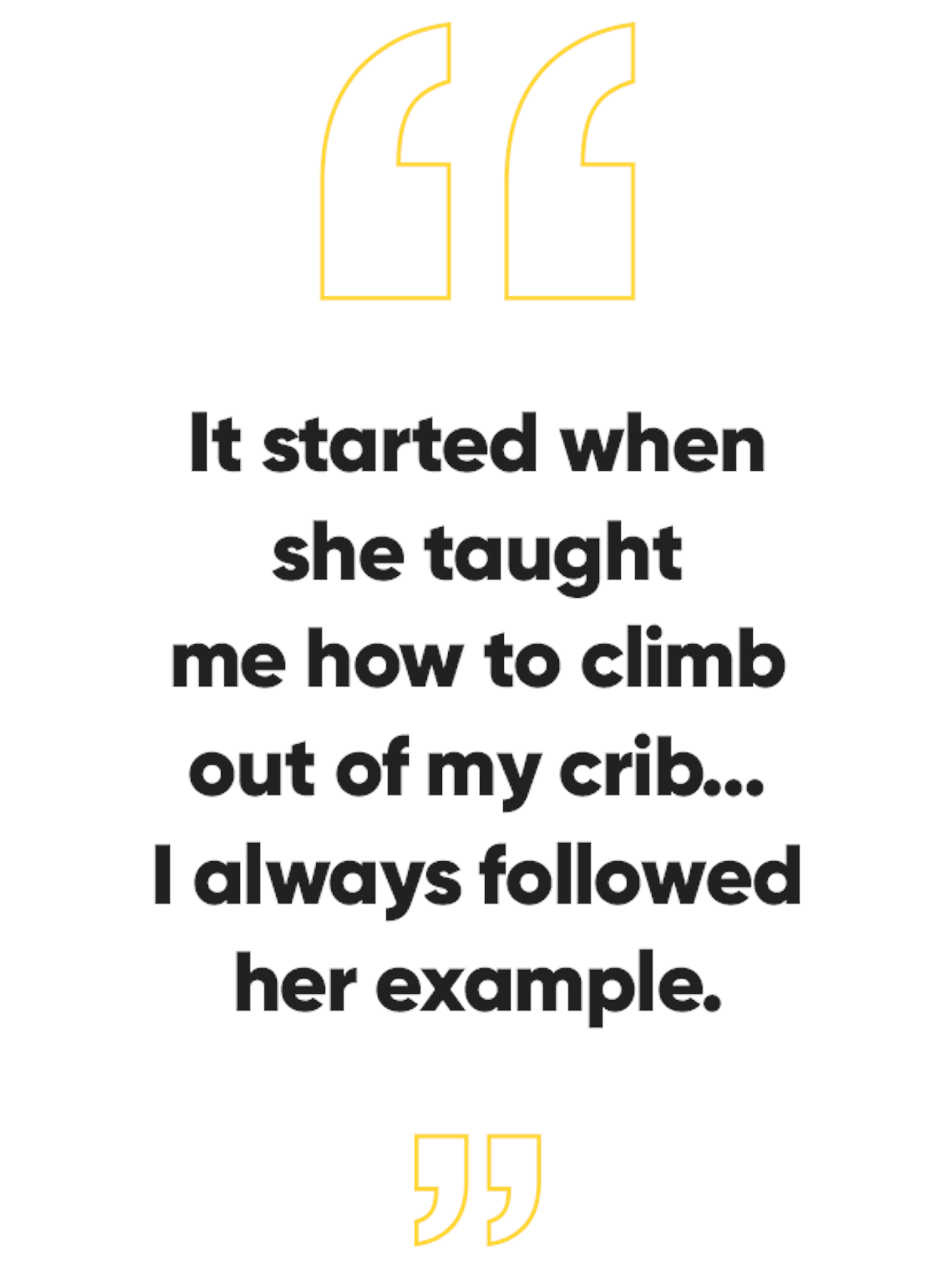
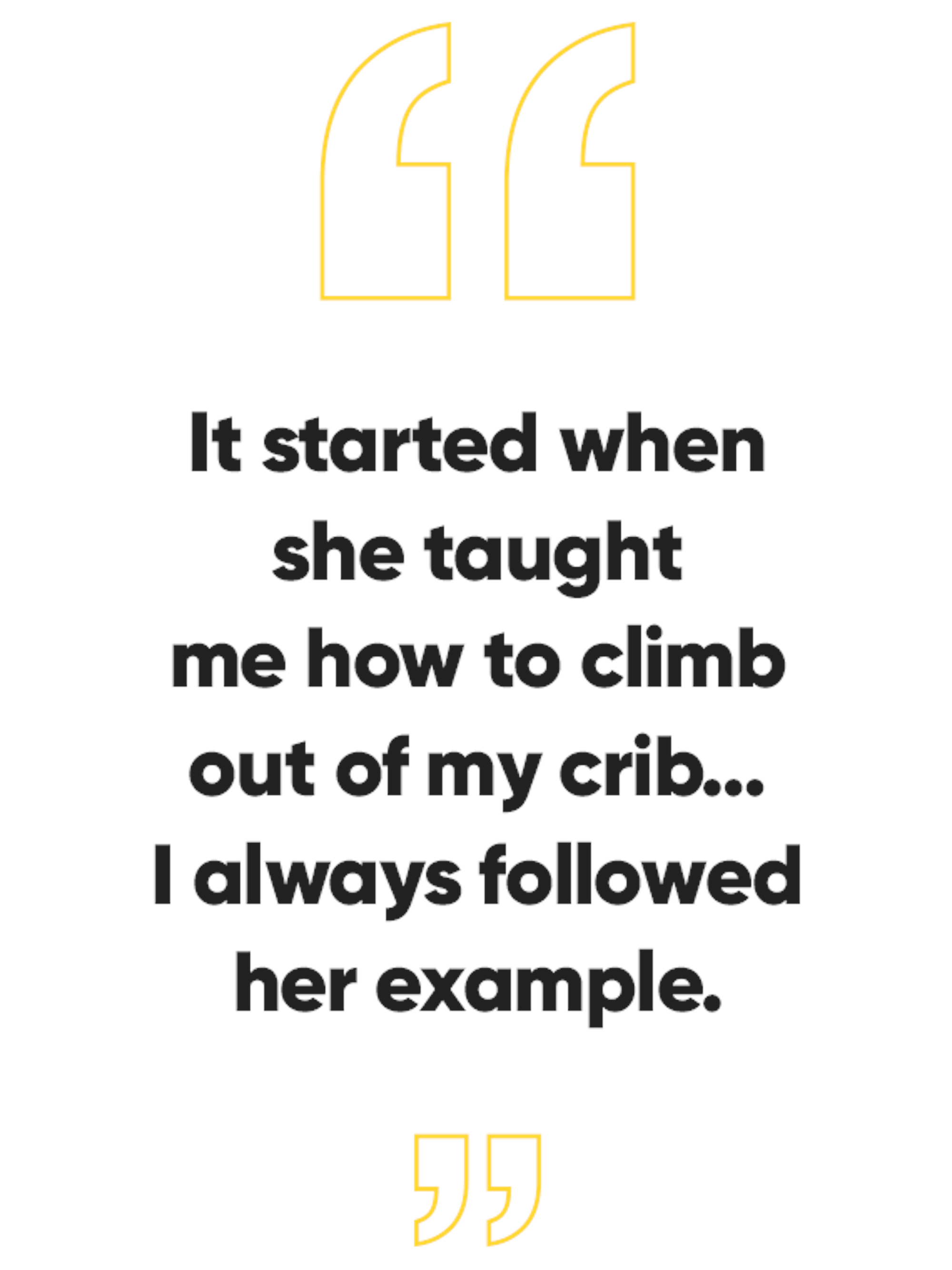
It was a pretty rad dynamic this winter,” says Abma. “Elyse has spent more time where I live in the last six or seven years than I have. I’m learning a lot from her, and it’s cool to be working as a team like that. We’re all looking for the same terrain, but no roshambos had to be done. There wasn’t a lot of ego, and that was definitely due to the male to female ratio. I even had some days where I’d take a moment to reflect on how well everything was going—I get goosebumps just thinking about it. It really brought the fun back to skiing for me.”
The film marks a first-time MSP appearance for Level 1 veteran Wiley Miller, who filmed close to the Pemberton home he shares with Monod. Her injury left more reel for Miller to fill, and he was happy to support the project. “It’s a really good time for it,” says Miller. “Gender equality is a big topic these days, and I think the timing will make the film more impactful.”
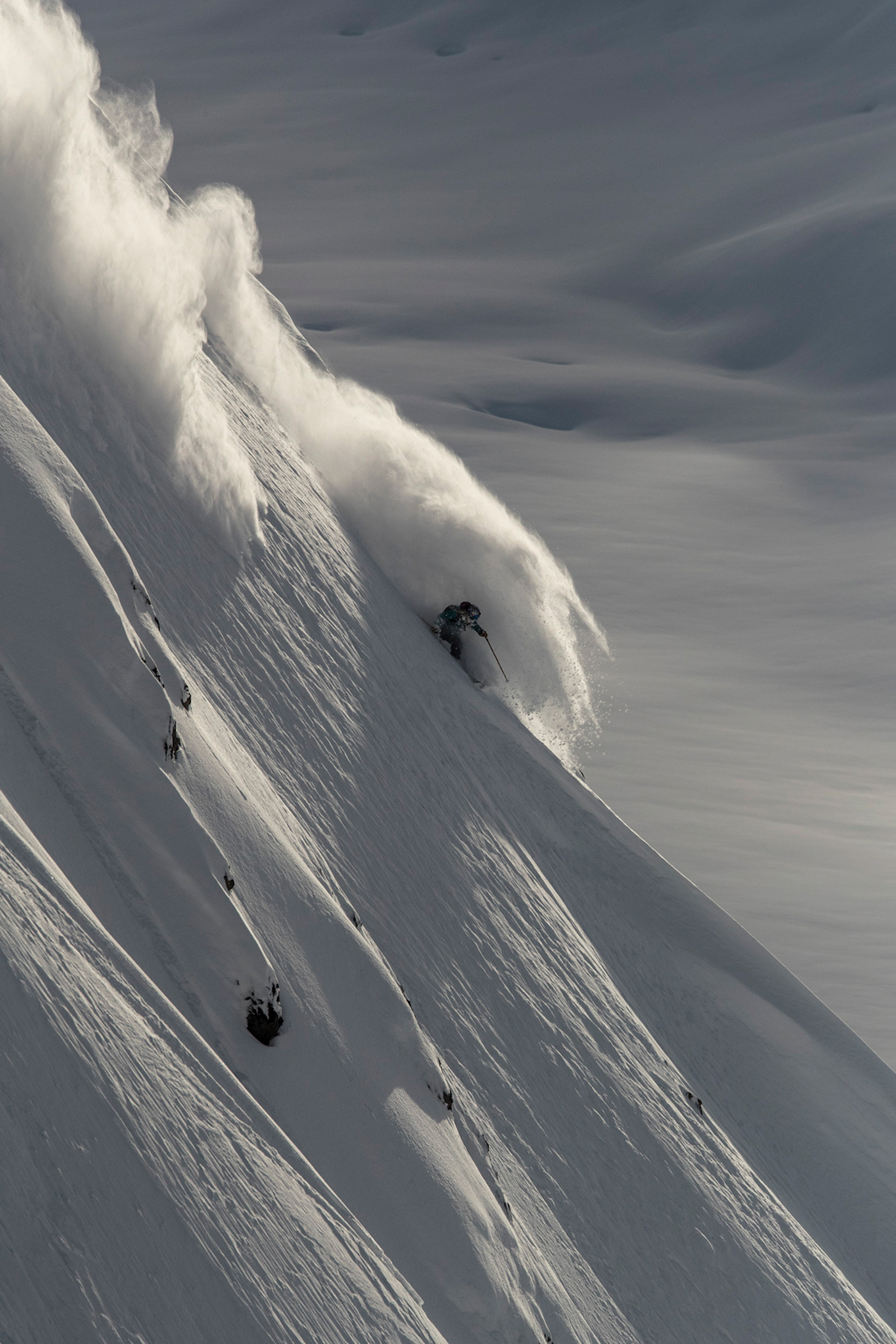
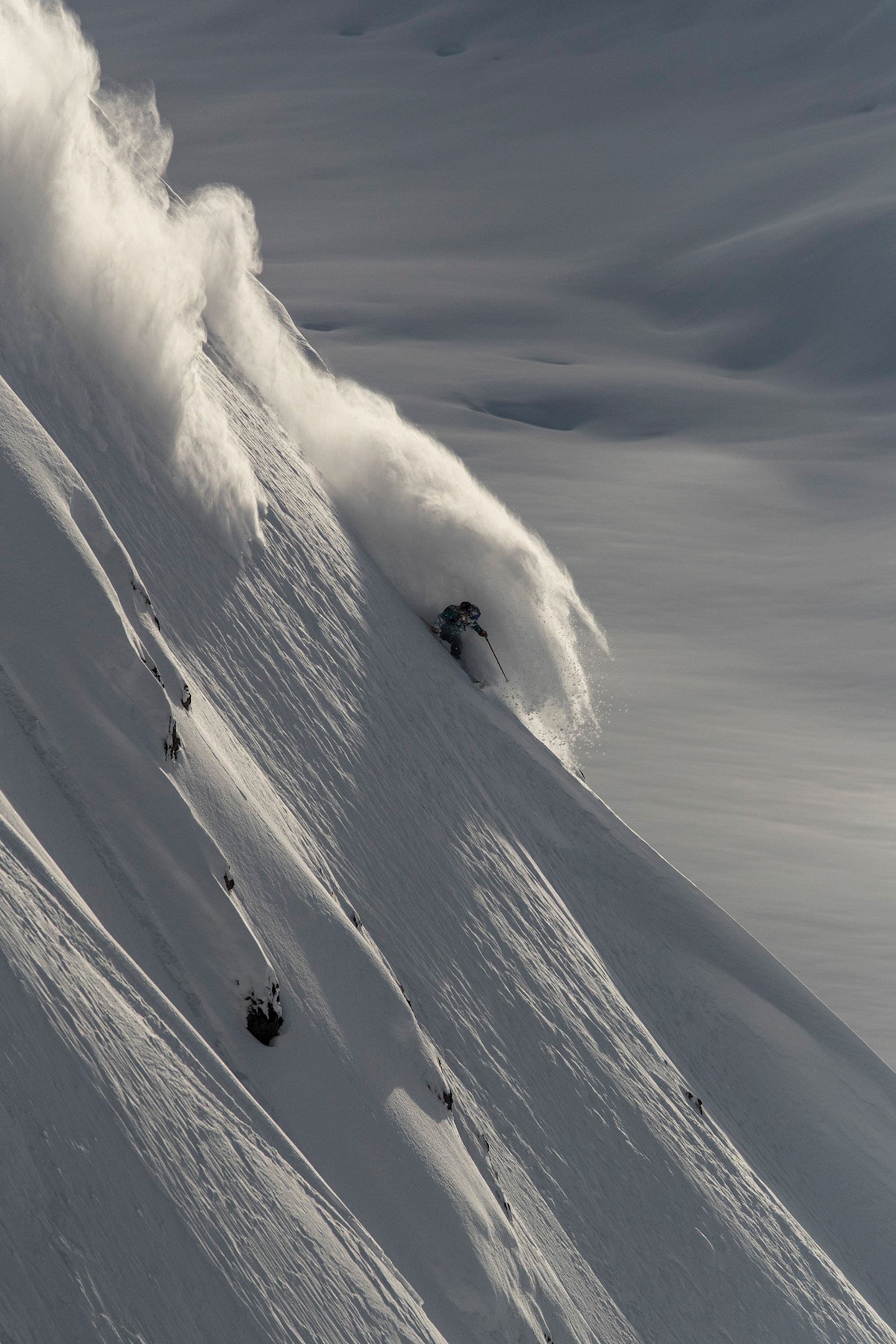
Angel Collinson in Girdwood, Alaska.
In the end, that’s what Matchstick Productions is banking on—that audience members will fill theaters and click download links this fall and get as much, if not more, from this film than their past 26 ski movies. We’re guessing most won’t even notice the ratio switch until they slow down the footage enough to see that ponytail following the skier through the air.
This story originally appeared in the November 2018 issue of FREESKIER (21.2), The Resort Guide. Click here to subscribe and receive copies of FREESKIER Magazine delivered right to your doorstep.

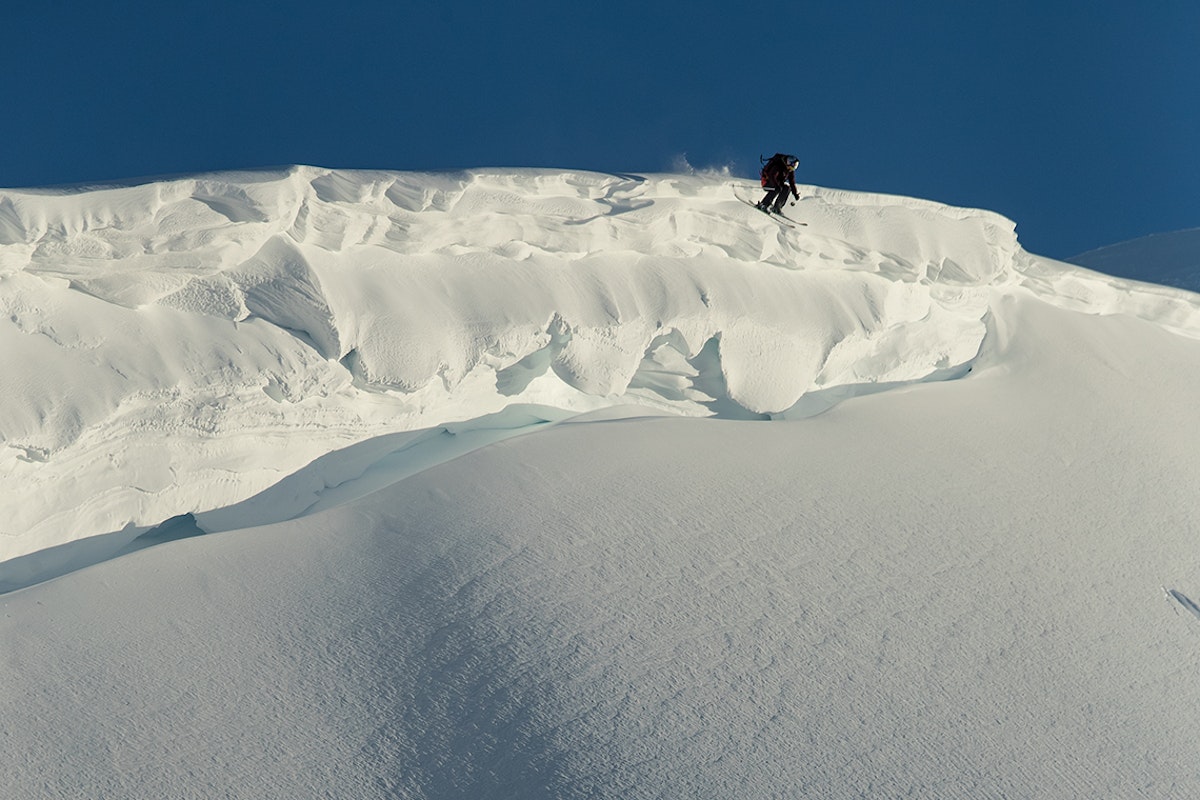
![[GIVEAWAY] Win a Legendary Ski Trip with Icelantic's Road to the Rocks](https://www.datocms-assets.com/163516/1765233064-r2r26_freeskier_leaderboard1.jpg?w=200&h=200&fit=crop)
![[GIVEAWAY] Win a Head-to-Toe Ski Setup from IFSA](https://www.datocms-assets.com/163516/1765920344-ifsa.jpg?w=200&h=200&fit=crop)
![[GIVEAWAY] Win a YoColorado X Coors Banquet Prize Package](https://www.datocms-assets.com/163516/1764877349-long-live-local-cooler-bag2.jpeg?w=200&h=200&fit=crop)
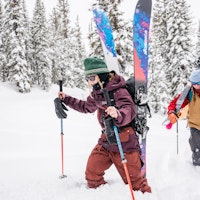
![[GIVEAWAY] Win a Legendary Ski Trip with Icelantic's Road to the Rocks](https://www.datocms-assets.com/163516/1765233064-r2r26_freeskier_leaderboard1.jpg?auto=format&w=400&h=300&fit=crop&crop=faces,entropy)
![[GIVEAWAY] Win a Head-to-Toe Ski Setup from IFSA](https://www.datocms-assets.com/163516/1765920344-ifsa.jpg?auto=format&w=400&h=300&fit=crop&crop=faces,entropy)


